From Roman ruins to sunset spots, here’s how to make the most out of your time in Bulgaria’s City of Culture. We’ll cover what to do in Plovdiv, how to get around, and where to stay, to the best food and drink recommendations.
I first came across Plovdiv on a ‘Best destinations in Bulgaria’ Google search, and after reading it was the European City of Culture in 2019, I decided to visit en route to Burgas Coliving (i.e. the best coliving in Bulgaria if you’re a digital nomad). Since my first visit in April 2023, I’ve been back twice—now I feel it’s time to write a guide on what to do in Plovdiv, Bulgaria’s 2nd (but best in my opinion) city.
Like me, you may not have heard of Plovdiv because its sister, Sofia, always comes first when people think of Bulgaria. Oh, and maybe Sunny Beach, but let’s forget about that one.
Plovdiv is the oldest inhabited city in Europe
Plovdiv’s history is wild—you can feel and see it as soon as you step into the centre. You can literally spot the layers of civilisations stacked on top of each other. Walking down the main street, you’ve got an Ottoman Mosque to your right, a harsh communist building to your left, and a Roman Amphitheatre underneath your feet.
Its history dates back 8,000 years, making it the oldest lived-in city in Europe and the sixth-oldest worldwide. Yeah, that’s wild. To get the most out of your trip to this underrated cultural and historical Bulgarian city, keep reading!
What to do in Plovdiv, Bulgaria
1. Get your bearings with a free walking tour
Alright, alright, an obvious one. But the Plovdiv Free Walking Tour was the first thing I did when I arrived in the city, and it really helped me get my bearings and an overview of what was important to see.
The tour leaves from Plovdiv City Hall every day at 11 AM. It’s tip-based, so give what you can!
2. See a concert in Plovdiv’s ancient amphitheatre
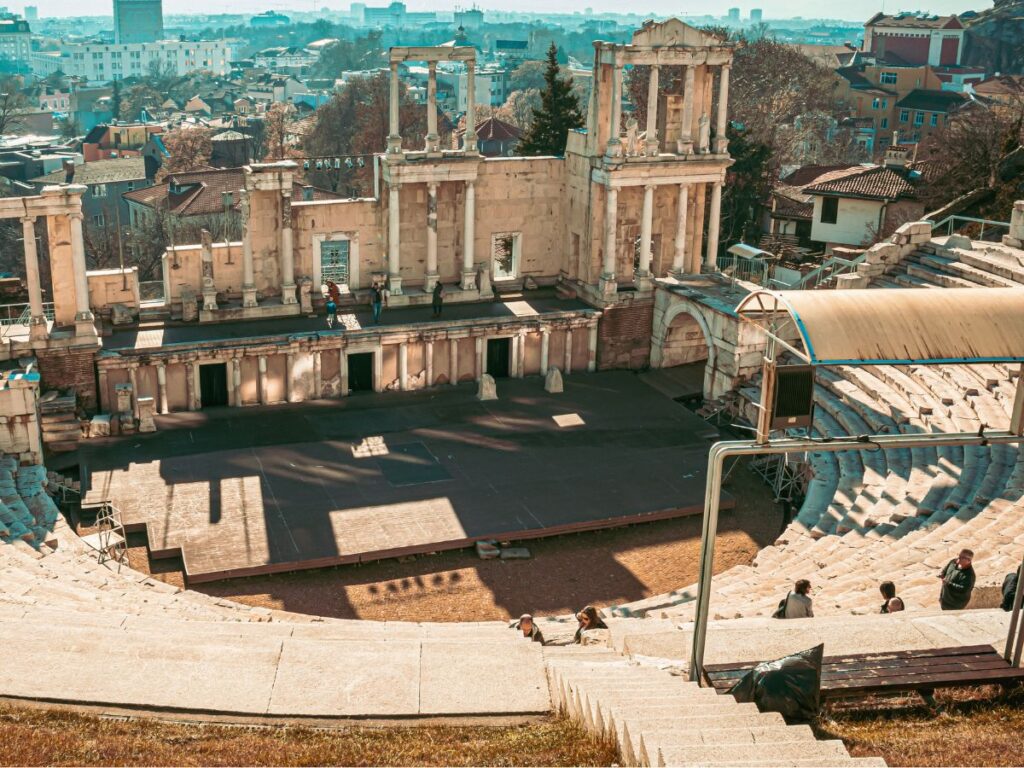
The Amphitheatre in the Old Town is an iconic place to watch a concert in the summer months, and it should be high on your list if there’s one taking place during your visit. You can find the up-and-coming schedule and buy tickets here.
3. Explore the old town of Plovdiv and its cats
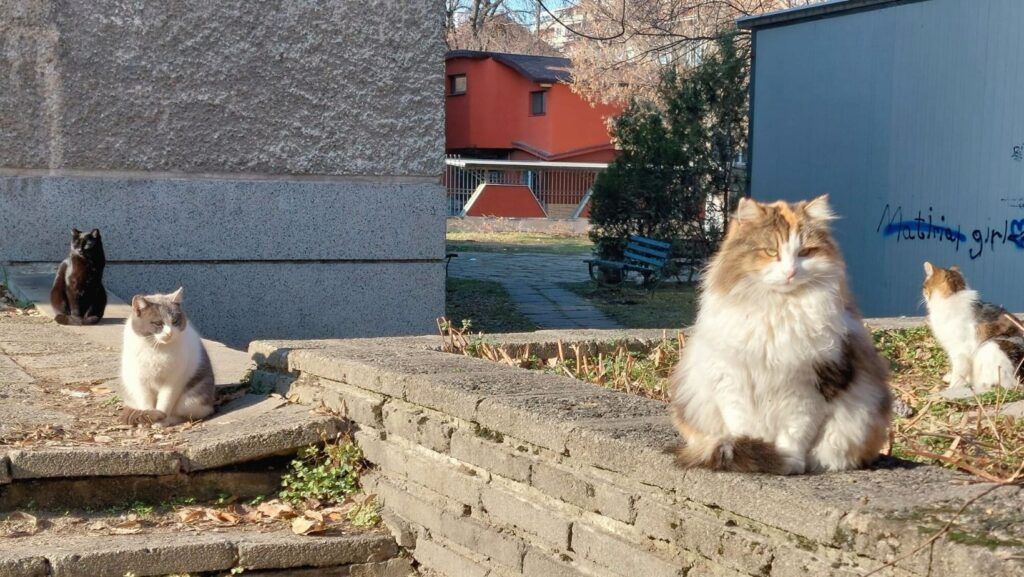
Situated on three hills and boasting lush views over the city, the Old Town gives Plovdiv its reputation as the oldest inhabited city in Europe. The history stretches back 8000 years, and it’s incredible to walk around the cobbled streets and see the evidence of civilisations built on top of each other.
Wander around Old Town, meet its feline inhabitants and grab a drink at one of the many cobbled street cafes. My favourite is Satori Magic. Cats have become a symbol of the Old Town and are so popular you can find them on magnets, postcards, t-shirts etc, in souvenir shops all over the city. It’s very much Istanbul or Kotor vibes if you’ve been there.
But just a heads up, Plovdiv Old Town is pretty small, so don’t expect Prague standards!
4. Go out in Kapana, the creative district
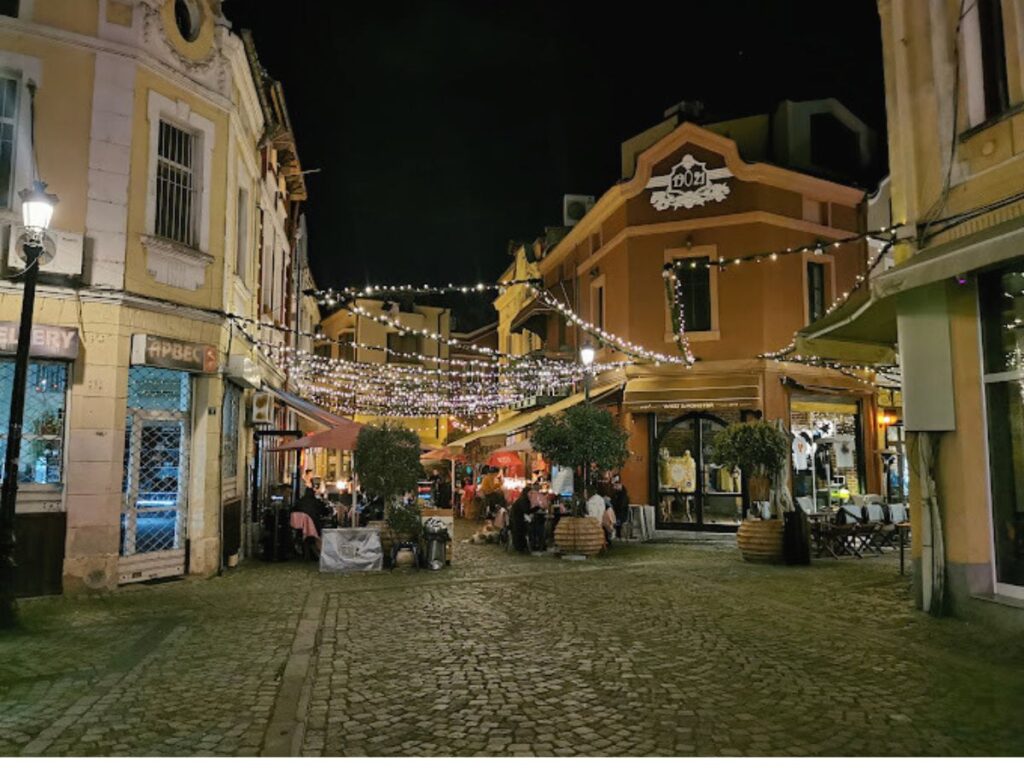
If you’re looking to go out for dinner or grab some drinks with friends, Kapana is the place to go.
Translated as “trap” in Bulgarian, it is often referred to as this because it “traps” you to drink for longer. Once you’re settled into a cosy bar, there’s no chance of leaving. But no, its name comes from its small, intertwining streets that are angled so that it feels like you’re trapped in a maze.
During communist times, it was a soulless place used as a car park. But since Plovdiv was named the European Capital of Culture in 2019, the area has really come into its own and risen from the ashes, so to speak.
By day, the pedestrianised zone is full of coffee drinkers and people out for lunch; by night, it turns into a place to go out. In my opinion, the best bars are Local Beer Bar, Kotka and Anyway Social.
5. Visit Dzuhmaya mosque
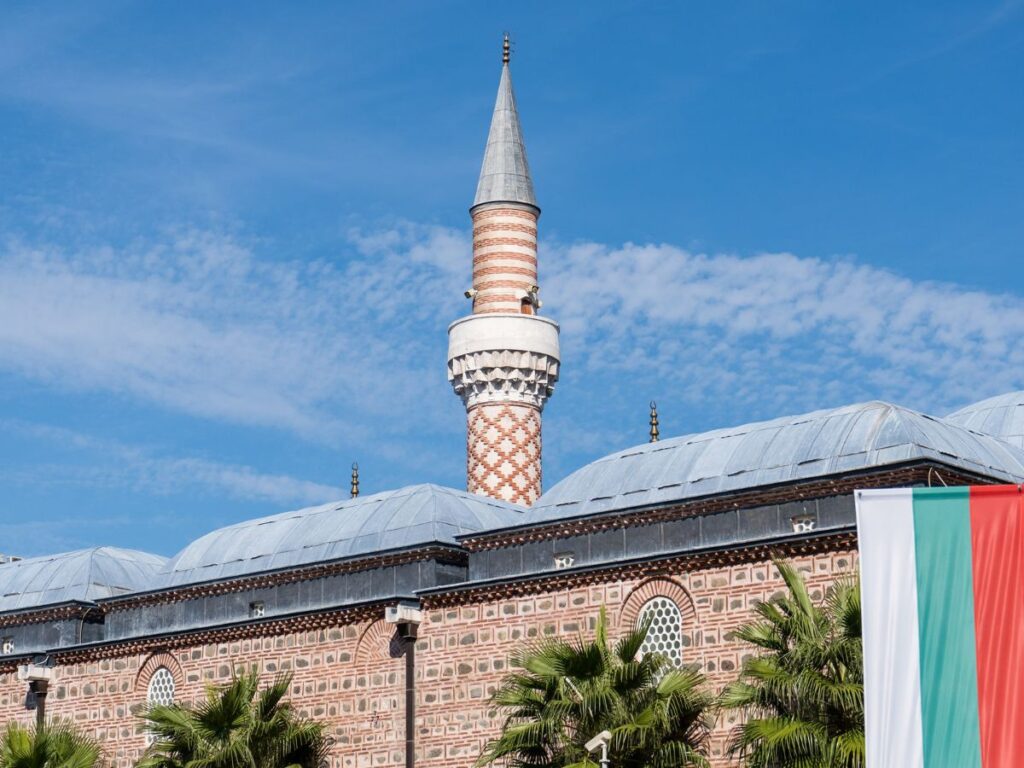
Located on the corner of the Kapana district, the Dzuhmaya Mosque is definitely the most impressive architectural building in the city for me. As it’s a working mosque, it’s free to visit and open late, so you can squeeze it in before heading out for dinner in Kapana.
6. Catch the sunset at Danov Hill
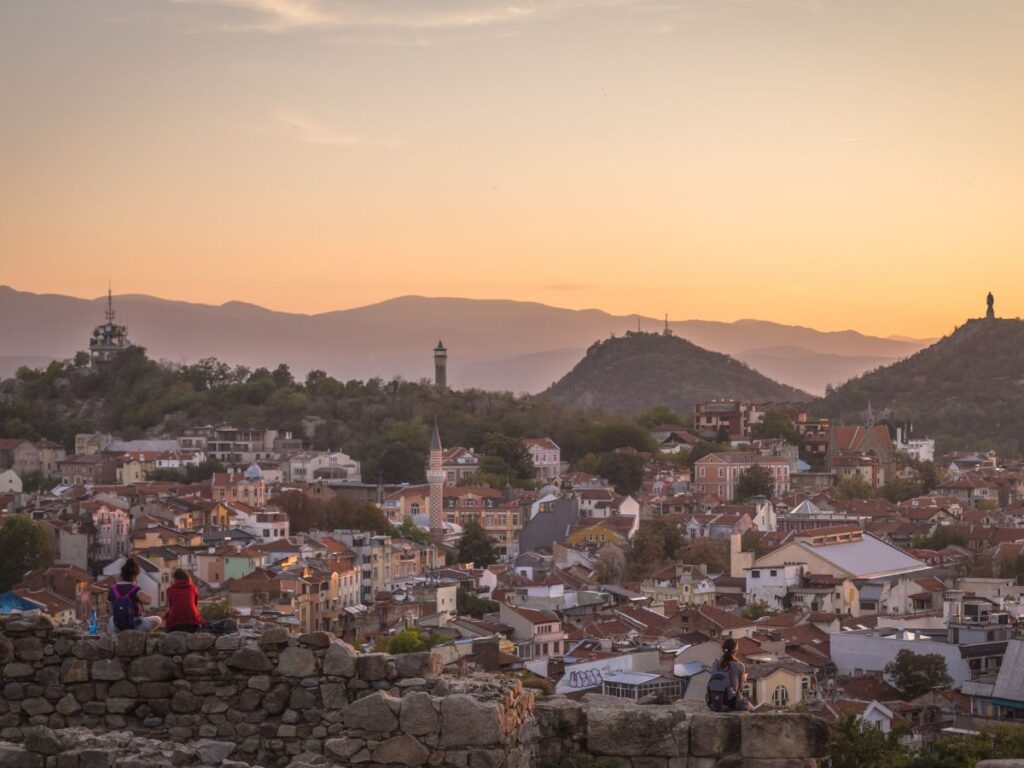
Plovdiv is famously known as the City of Seven Hills, and the best local spot for sunset is Danov Hill. So, I suggest popping to the Billa supermarket in the centre, grabbing some vino or beers and heading up the hill to watch the sunset over the city. It’s a short walk from the main pedestrianised street and not too tough. You’ll find many locals up here with the same idea as you!
7. People watch at Tsar Simeon Park
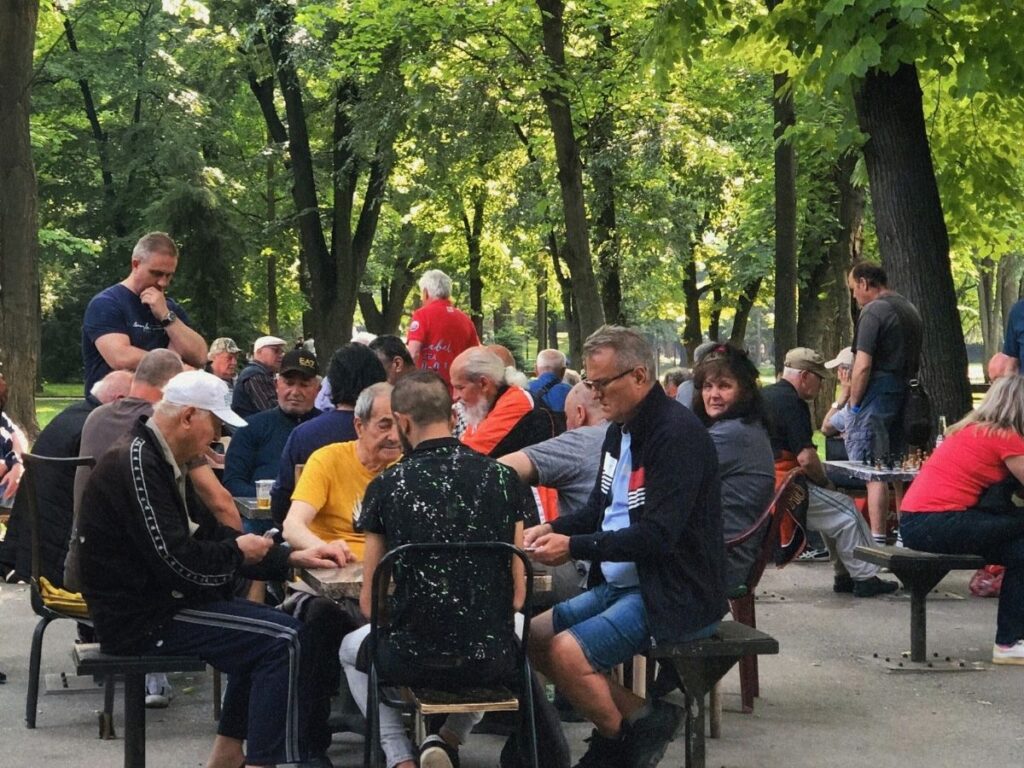
Tsar Simeon Park was one of my first impressions of the city. If you arrive by train, you’ll undoubtedly walk through it. It’s a park full of life! Parks is what the Bulgarians do well in general. I’m talking about two grandpas playing chess and retired ladies living their best lives practising a traditional group Bulgarian dance…I promise I’m not even romanticising it; I’ve got videos to prove it. So, go grab an ice cream from Afreddo Gelateria—preferably white chocolate and pistachio—and stroll through Tsar Simeon Park!
8. Take a day trip to visit Asenovgrad Fort
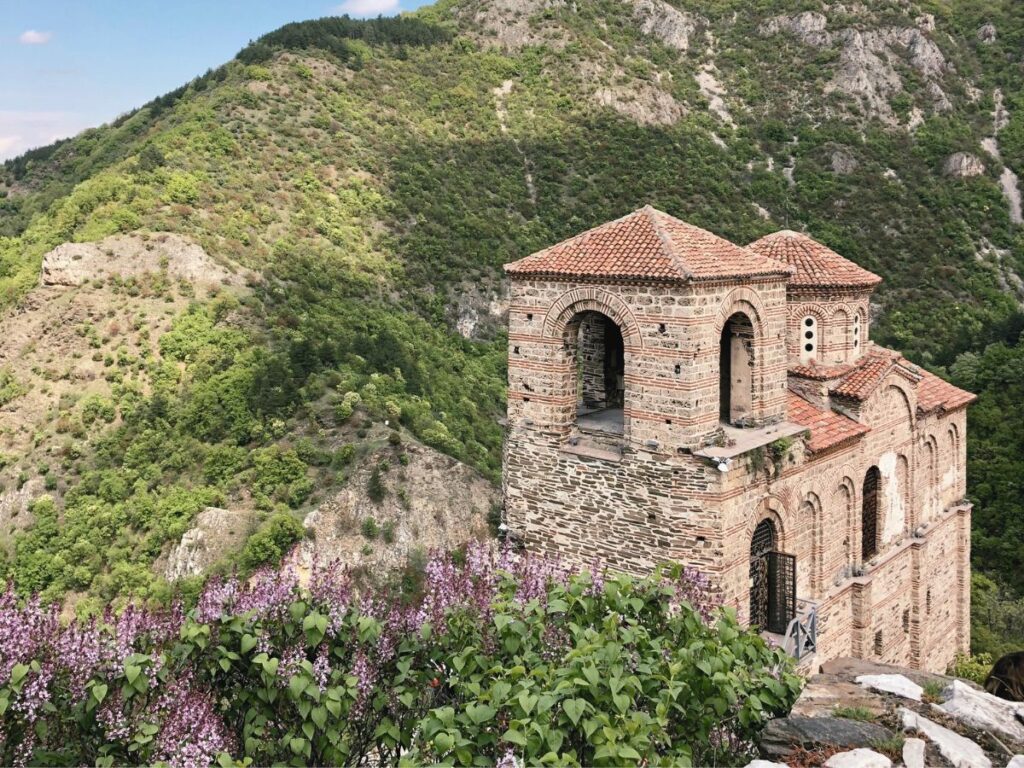
Located only a 20-minute BGN 1.5 (€0.75) train journey from the central train station, Asenovgrad is a sweet base for many hiking trails and home to Asenovgrad Fort.
The first 30 minutes of the walk is through the town, but then you reach a paved lane leading up to the Fort. It’s not too steep and will take around 30 minutes to plod your way up there.
The ticket is BGN 8 for adults and BGN 5 for students and school children. But, if you’re on a budget, paying for a ticket isn’t necessary as you can still take lots of photos and see the fort up close. You just can’t go physically inside.
How many days in Plodiv are enough?
I’d definitely say you can see everything in Plovdiv in 2 days, but add on an extra day if you want to take a day trip to Asenovgrad Fort.
Where to stay in Plovdiv?
Despite having a population of 350,000, Plovdiv doesn’t feel like a big city and no matter where you choose to stay, you’ll never be further than a 15-minute bus ride from the centre. But I’d personally recommend staying close to Old Town so you can walk everywhere.
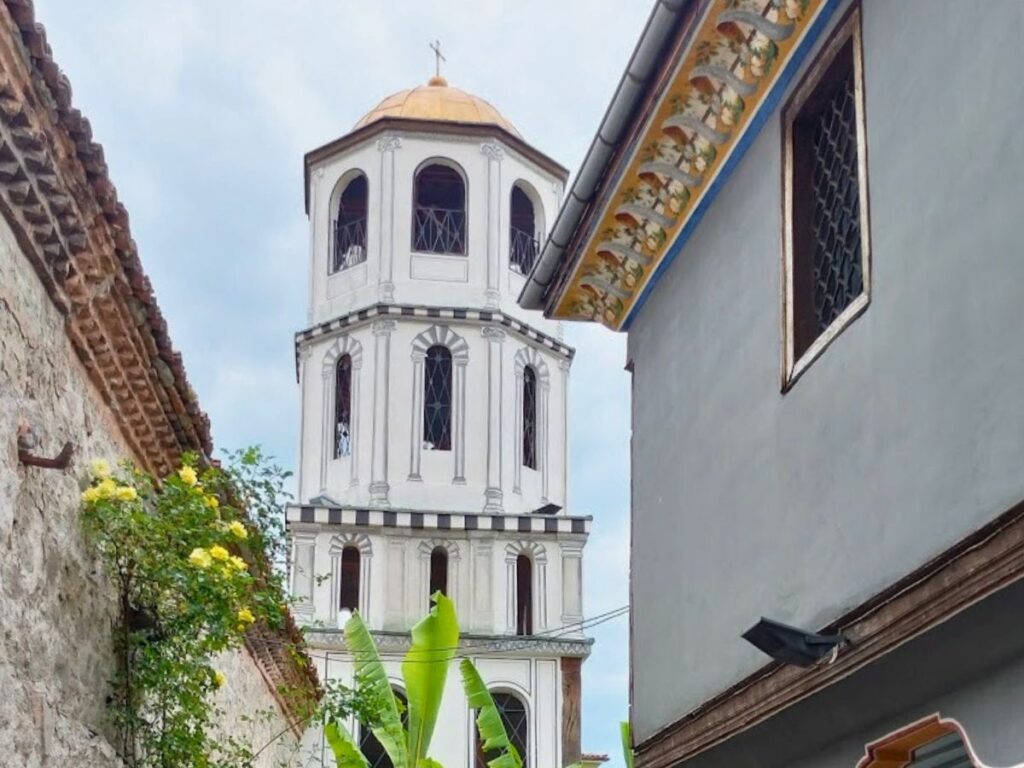
Hotels in Plovidiv
-
- Hostel Old Plovdiv ($): Located in the best spot in Old Town, Hostel Old Plovdiv has a mix of dorms and private rooms. Whenever I’m in Plovdiv, I always stay here. The owners are super sweet, and there is a constant supply of free homemade lemonade.
- Hotel Gallery 37 ($$$): An intimate boutique hotel in a beautifully renovated UNESCO building in Old Town, just a few steps from the amphitheatre. If you have the budget for it, I would 1000% recommend staying it.
How to get around Plovdiv?
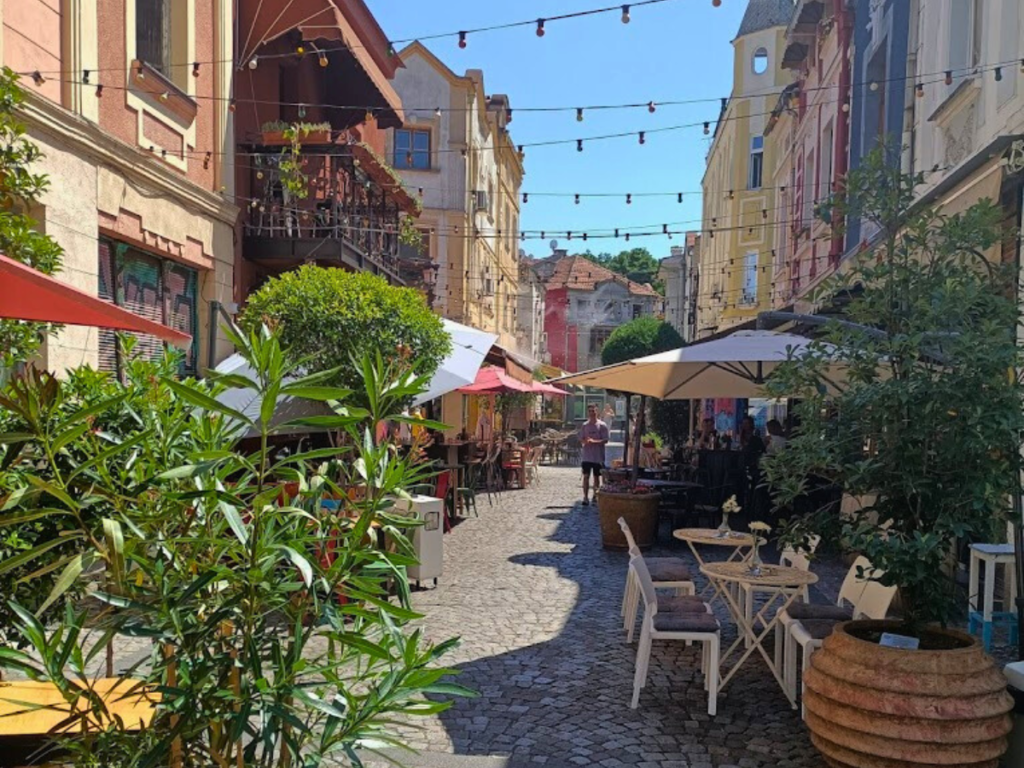
As mentioned, Plovdiv is an incredibly walkable city where you can walk from one side of the city centre to the other in just 15/20 minutes. However, if you opt for an Airbnb or hotel outside the centre, a bus is the easiest way to get around.
Plovdiv bus guide
In Plovdiv, buses link the city centre with surrounding neighbourhoods. Most buses stop at this bus stop.
Every bus in Plovdiv costs BGN 1 — bargain! When you get on the bus, don’t go to the driver to buy a ticket; a ticket seller will come to you once you’re seated. Make sure you have change with you.
Tip: Moovit is the best transport app in Bulgaria and will give you the latest schedule. Google Maps doesn’t work so well there.
Plovdiv taxi guide
The public buses in Plovdiv stop around 9 pm – I was so surprised! So, after a few drinks in Kapana, you have two options: to walk home or take a taxi. Many locals opt for taxis at night as they are affordable and run on the meter.
It’s easy to catch a taxi. Just stand on one of the busy roads in the cit,y like “Tsar Boris III Obedinitel”, and one will pass by. If you’re in a quiet neighbourhood and can’t find one to flag down, there’s an app called Taxi.Me where you can order one.
Plovdiv airport to the city centre
Plovdiv Airport is teeny tiny, with only 3 or 4 daily flights.
When landing, you can grab a taxi, which will cost around BGN 35 to the centre. Or jump on a shuttle bus for BGN 10 per person. The shuttle waits until everyone has passed through arrivals and then leaves and drops you in the city centre, close to the train station.
If you land in Sofia, it’s really easy to reach Plovdiv by train. Take the metro into the city centre and then hop on one of the many trains heading towards Plovdiv each day.
Sofia to Plovdiv train
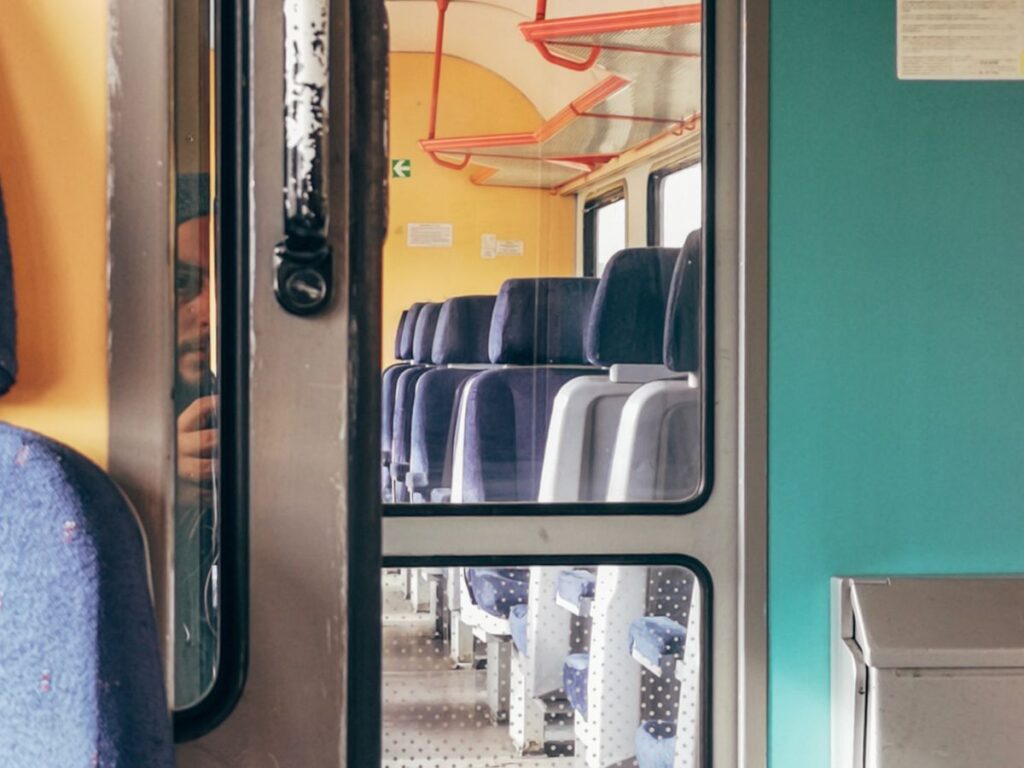
Bulgarian trains are pretty good, in my opinion, and a train from Sofia to Plovdiv will cost you around BGN 9. It’s a 2.5-hour journey, and you’ll pass the Bulgarian countryside.
You can check the train times in advance via the BDZ website. To buy a train ticket, head to the train station 15 minutes before, and you’ll find lots of ticket counters. Unlike in the UK, the ticket is always the same price no matter when you buy it, so don’t worry about buying one in advance.
I love the trains in Bulgaria, as some have carriages like Harry Potter and restaurant carts.
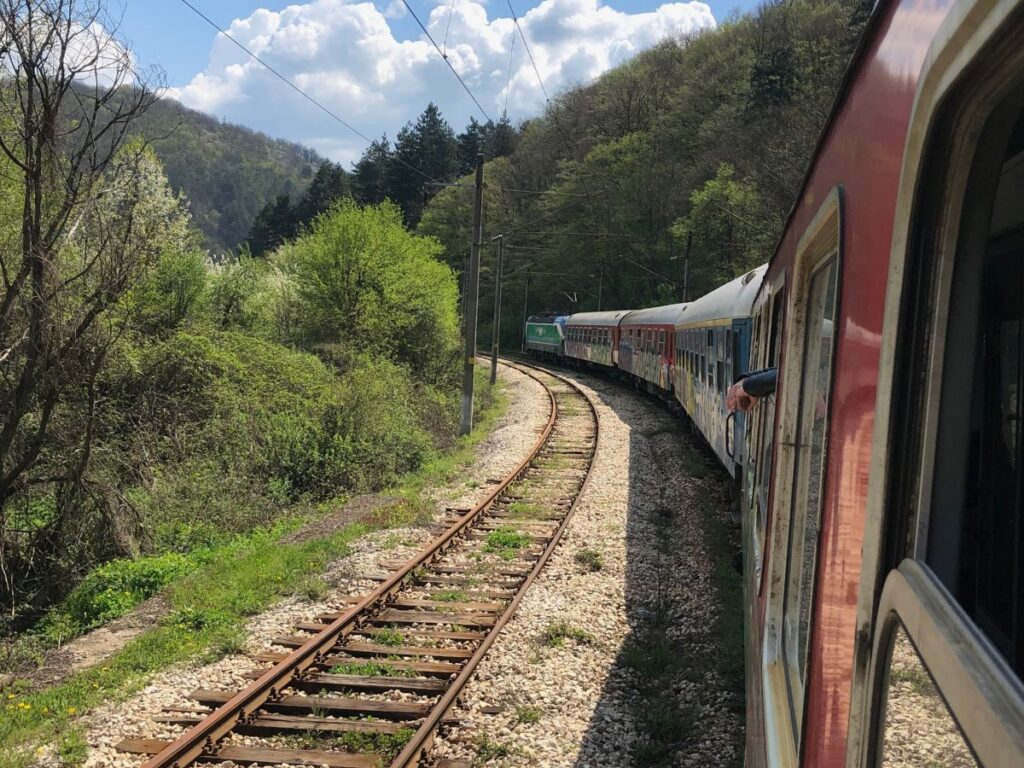
Sofia to Plovdiv bus
The bus from Sofia to Plovdiv takes around 2 hours, shorter than the train, and you can buy tickets on Busbud.
Best restaurants in Plovdiv?
In Plovdiv, there are plenty of places to eat. My favourite restaurants are:
- Pavaj ($$): a local Bulgarian menu in the heart of the Kapana district.
- Rahat Tepe ($$): a tad touristy but worth it for the no-fuss Bulgarian food and panoramic views.
- Supa Bar ($): a great lunch spot serving hearty soup.
- Fresh pasta ($$): no-fuss Italian spot.
- Street Chefs Plovdiv ($$): we’re only human? The best burger and fries in Plovdiv in my opinion.
Best bars in Plovdiv?
- Baba Yaga ($) owned by a lovely French guy and perfect international watering spot
- Kotka i Mishka (Cat and Mouse Beer Bar) ($) craft beer and nice vibes
- Bar Petnoto ($$) cosy wine bar with laid back vibes
- Satori Magic located in Old Town
Best coffee shops in Plovdiv?
- Dwell Coffee House run by the sweetest family
- The Family Coffee Roasters
In this short guide on what to do in Plovdiv, we’ve covered everything from how to spend your time in this beautiful city, where to stay, and how to get around, to the best eating and drinking spots.
Want to explore Bulgaria further? Plovdiv is a central spot—head west to the vibrant capital, Sofia; south to Bansko, a haven for hiking and skiing; or east to the seaside city of Burgas. I’m working on a 2-week Bulgarian itinerary, so watch this space!


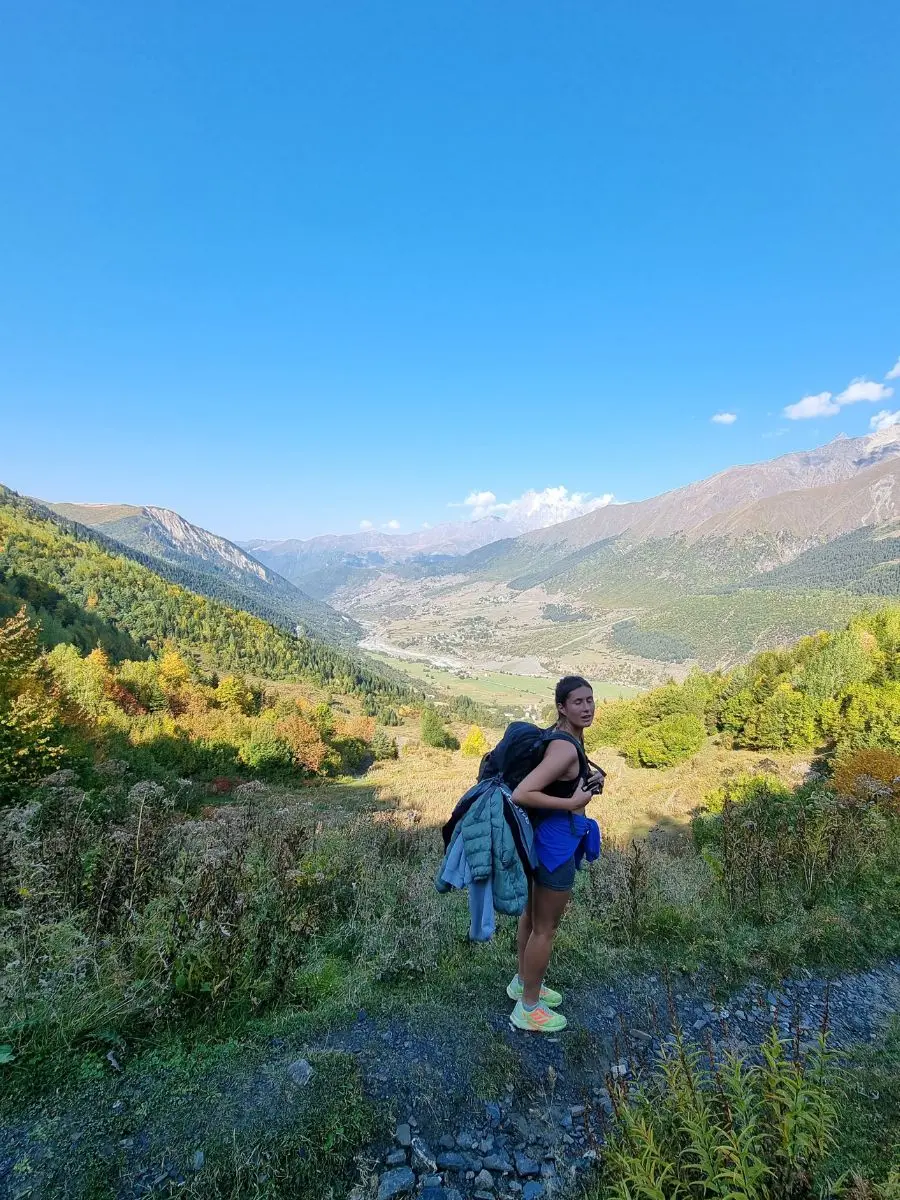
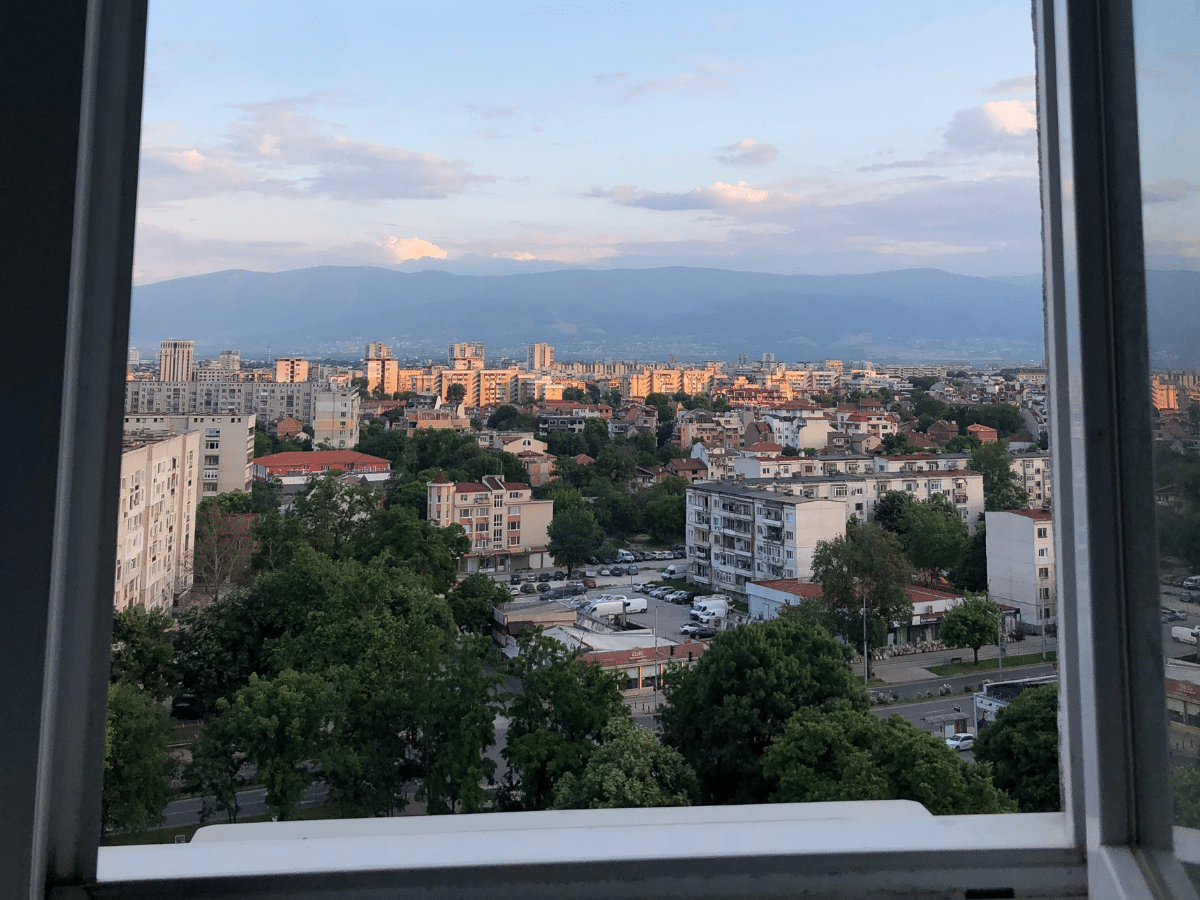
1 comment